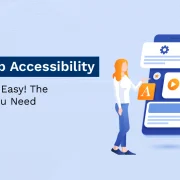Conversational Learning (aka Conversational Interfaces): Conversational Learning, facilitated through conversational interfaces like chatbots and virtual assistants, represents an innovative approach to education. It leverages natural language processing (NLP) and AI to create interactive, personalized learning experiences. Instead of passively consuming information, learners actively engage in dialogue, asking questions, receiving tailored feedback, and exploring topics in a dynamic, conversational manner, fostering deeper understanding and knowledge retention.
What is Conversational Learning (aka Conversational Interfaces)?
Conversational Learning, also known as Conversational Interfaces, represents a paradigm shift in how we interact with and acquire knowledge. Instead of passively reading or watching, learners actively engage in a dialogue with a system, often powered by Artificial Intelligence (AI), to facilitate a more personalized and effective learning experience.
Think of it as having a one-on-one tutor available 24/7. Conversational Learning leverages technologies like chatbots, virtual assistants, and voice interfaces to guide learners through material, answer their questions in real-time, and adapt the pace and content based on individual progress and understanding. These interfaces simulate a natural conversation, making learning more intuitive and less intimidating.
Key characteristics of Conversational Learning include:
- Interactive Dialogue: Learners ask questions, receive feedback, and engage in a back-and-forth exchange.
- Personalized Learning Paths: The system adapts to the learner’s skill level and learning style.
- Immediate Feedback: Learners receive instant answers and guidance, fostering a deeper understanding.
- Accessibility: Conversational interfaces can be accessed on various devices, making learning available anytime, anywhere.
By transforming learning into a dynamic conversation, Conversational Learning enhances engagement, improves knowledge retention, and ultimately accelerates the learning process. It’s a powerful tool for modern education and training, enabling more effective and personalized learning experiences.
Why is Conversational Learning (aka Conversational Interfaces) Important?
Conversational learning, also known as conversational interfaces, is gaining prominence as a vital element in modern education and training. Its importance stems from its ability to create personalized, engaging, and efficient learning experiences that traditional methods often struggle to replicate.
Firstly, conversational learning fosters active engagement. Unlike passively absorbing information, learners actively participate in a dialogue with the system, posing questions, seeking clarifications, and receiving immediate feedback. This interactive nature significantly enhances knowledge retention and deeper understanding.
Secondly, personalization is key. Conversational interfaces can adapt to individual learning styles, paces, and knowledge gaps. By analyzing learner responses and performance, the system can tailor the content, complexity, and delivery method to optimize the learning journey for each user. This personalized approach ensures relevance and maximizes learning effectiveness.
Thirdly, accessibility and convenience are significantly improved. Conversational learning can be accessed anytime, anywhere, through various devices, making education more flexible and convenient. Learners can learn at their own pace and on their own schedule, fitting education into their busy lives.
Finally, conversational learning provides valuable data insights. The interactions within a conversational interface generate rich data about learner progress, areas of difficulty, and preferred learning styles. This data can be used to continuously improve the learning content and the conversational interface itself, leading to more effective and impactful learning outcomes. This data-driven approach enhances the overall quality of education and training programs, improving ROI of learning investments.
How does Conversational Learning (aka Conversational Interfaces) work?
Conversational Learning, also known as Conversational Interfaces, simulates a dialogue between a learner and a system (often powered by AI). This interactive method delivers knowledge, assesses understanding, and provides feedback through natural language exchanges, mimicking a real conversation.
Here’s a breakdown of the process:
- Input: The learner initiates the conversation by posing a question or responding to a prompt using text or voice.
- Natural Language Processing (NLP): The system employs NLP to understand the learner’s input, extracting meaning, intent, and key entities.
- Knowledge Base & Logic: The NLP output is then compared against a pre-defined knowledge base, rules engine, or machine learning models to find relevant information or determine the appropriate response.
- Response Generation: Based on the identified information, the system generates a response tailored to the learner’s input. This response can be in the form of text, audio, video, or interactive elements.
- Context Management: The system remembers the previous interactions in the conversation, maintaining context to ensure that the conversation flows naturally and relevantly. This allows for follow-up questions and deeper exploration of the topic.
- Adaptive Learning: Advanced systems use machine learning to analyze learner interactions, identify knowledge gaps, and personalize the learning path, adapting the content and difficulty to the individual’s needs.
By continuously engaging the learner in a conversational manner, Conversational Learning facilitates active recall, promotes critical thinking, and enhances knowledge retention. The instant feedback and personalized guidance available through these interfaces provide a more engaging and effective learning experience than traditional methods.
Conversational Learning: Real-World Brand Examples
Conversational Learning, often manifested through Conversational Interfaces, empowers brands to engage with customers in dynamic and personalized ways. Leading companies are leveraging this technology for diverse applications.
Duolingo: A pioneer in language education, Duolingo utilizes a chatbot-style interface within its app. Users learn new languages through interactive conversations, receiving immediate feedback and personalized guidance, making the learning process more engaging and effective. This approach mirrors real-life interactions, fostering better language retention.
SEPHORA: The beauty retailer employs chatbots to assist customers with product selection. These conversational interfaces ask targeted questions about skin type, preferences, and desired outcomes, ultimately recommending suitable products. This personalized shopping experience enhances customer satisfaction and drives sales by mimicking the assistance of an in-store consultant.
Domino’s Pizza: Domino’s AnyWare platform allows customers to order pizza via various conversational channels, including Facebook Messenger and voice assistants. This seamless ordering process simplifies the customer journey, making it incredibly convenient to place orders regardless of location or device. This accessibility fosters brand loyalty and encourages repeat purchases.
H&M: The fashion retailer has experimented with conversational interfaces that provide style advice based on user preferences. By asking questions about clothing styles, occasions, and color preferences, the chatbot suggests outfits and provides personalized recommendations, enhancing the online shopping experience and driving fashion inspiration.
These examples demonstrate how leading brands are leveraging Conversational Learning to improve customer engagement, personalize experiences, and drive business results. The versatility of Conversational Interfaces makes them a powerful tool for various industries.
Key Benefits of Conversational Learning (aka Conversational Interfaces)
Conversational Learning, also known as Conversational Interfaces, offers a transformative approach to education and training, providing numerous benefits for both learners and educators. Its interactive and personalized nature enhances engagement and knowledge retention, leading to improved learning outcomes.
Personalized Learning Experience: Conversational interfaces adapt to individual learning styles and paces. By understanding learner responses and progress, they tailor the content and delivery method, ensuring a personalized and effective learning journey. This adaptive learning path caters to specific needs and knowledge gaps, maximizing learning efficiency.
Increased Engagement and Motivation: The interactive nature of conversational learning keeps learners actively involved. Through engaging dialogues, quizzes, and feedback, it fosters a more stimulating and enjoyable learning environment, leading to higher motivation and better learning outcomes.
Instant Feedback and Support: Learners receive immediate feedback on their progress and understanding. This allows for quick identification and correction of errors, preventing the reinforcement of incorrect information. The availability of instant support and guidance enhances the learning experience and reduces frustration.
Accessibility and Convenience: Conversational learning can be accessed anytime, anywhere, on various devices. This flexibility makes learning more convenient and accessible, accommodating different schedules and learning preferences. It removes geographical barriers and allows learners to learn at their own pace.
Improved Knowledge Retention: The active participation and personalized feedback in conversational learning contribute to improved knowledge retention. By actively engaging with the material and receiving immediate reinforcement, learners are more likely to remember and apply what they have learned.
Cost-Effective Training Solutions: Conversational learning can be a cost-effective solution for training and development. Automating the delivery of training materials and providing personalized support reduces the need for expensive instructor-led sessions and allows for scalable learning solutions.
Common Misconceptions Around Conversational Learning (aka Conversational Interfaces)
Conversational Learning, also known as Conversational Interfaces, offers a dynamic and engaging way to learn. However, several misconceptions often cloud understanding. Let’s debunk some common ones:
Misconception 1: It’s just a chatbot. Conversational Learning is far more sophisticated than a simple chatbot. While chatbots are a component, true Conversational Learning platforms leverage AI to personalize learning paths, adapt to individual needs, and provide nuanced feedback, going beyond pre-programmed responses.
Misconception 2: It replaces human instructors. Conversational Learning augments, not replaces, human instructors. It can handle repetitive tasks, provide immediate support, and offer personalized practice, freeing up educators to focus on higher-level engagement, critical thinking development, and individualized mentoring.
Misconception 3: It’s only for technical subjects. While effective in STEM fields, Conversational Learning’s adaptable nature makes it suitable for diverse subjects, from language learning and history to soft skills training and compliance education. The key is well-designed dialogue and adaptive learning algorithms.
Misconception 4: It’s expensive and complex to implement. While custom solutions can be costly, readily available platforms offer affordable and user-friendly options. These platforms often include drag-and-drop interfaces and pre-built templates, making implementation accessible to various organizations and educational institutions.
Misconception 5: It’s impersonal and lacks empathy. Modern Conversational Learning systems incorporate emotional intelligence and personalized feedback mechanisms to create a more empathetic learning experience. Through adaptive language and tailored support, they foster a sense of connection and motivation, enhancing learner engagement and outcomes.




